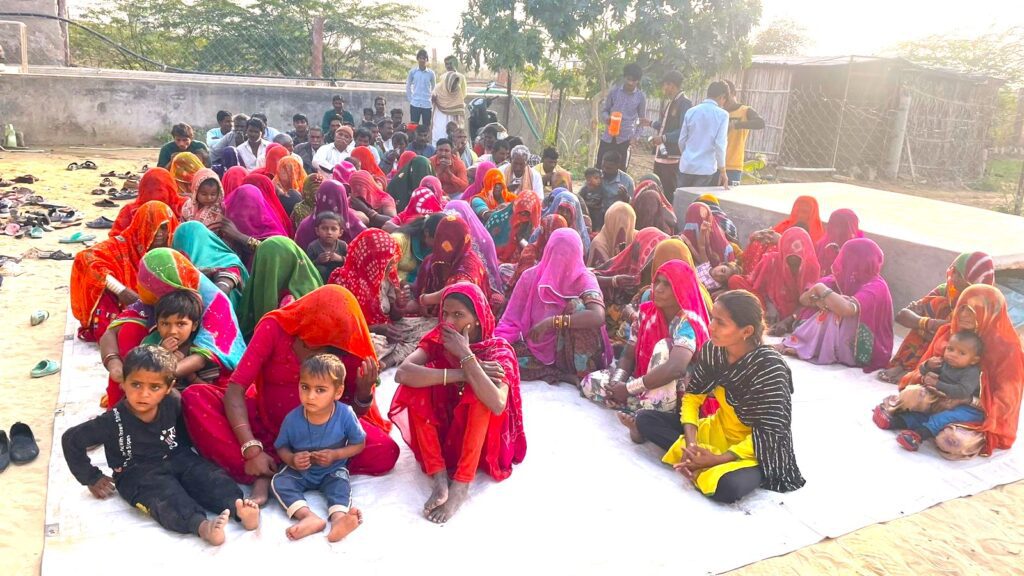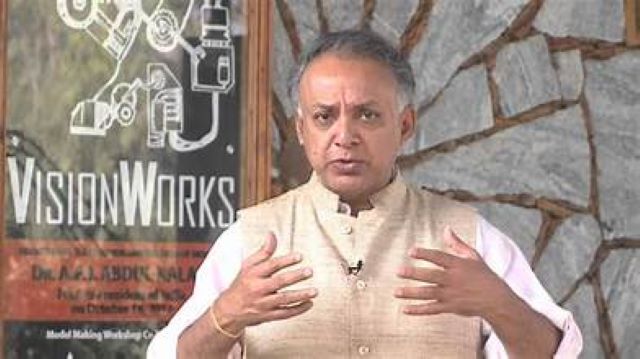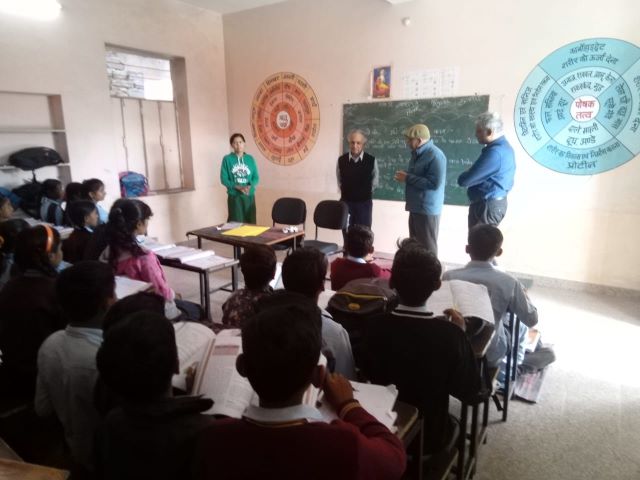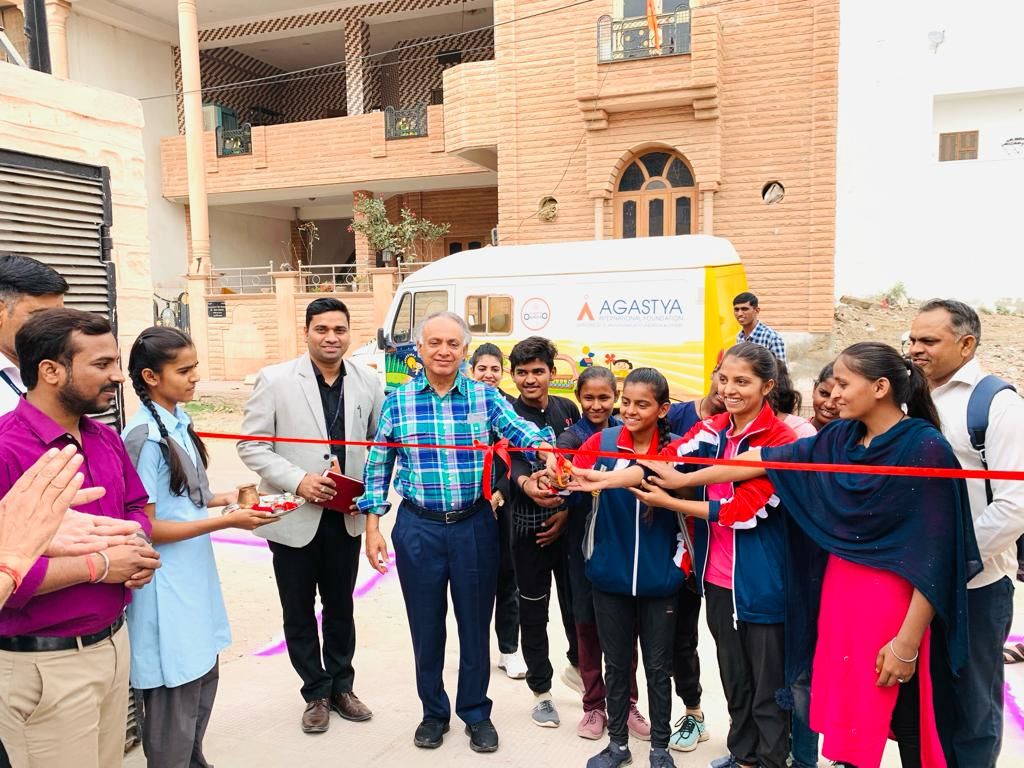Lassi with Lavina introduces a new column, Diary of A Changemaker, written by noted thought leaders who are changing the world in major ways but who also have the humanity and compassion to shine a light on forgotten corners and bring changes there for forgotten populations.
Ramji Raghavan is the first in our series on power people who are helping the powerless to fend for themselves.
Raghavan is a social innovator and the founder of Agastya International Foundation which has transformed the lives of so many children in India with its remarkable science-based curriculum which instills a love of learning in all children. This year Agastya celebrates 25 years of service to disadvantaged children. Recognitions won by Agastya for its work include the Google Global Impact Challenge Award and Marico Innovation for India Award, being featured in The Rockefeller Foundation’s NextCentury Gallery of top 100 global innovations and commended by the Clinton Global Initiative for its commitment to impact 37 million children.
During a visit to Jodhpur, Raghavan turned his attention to a forgotten hamlet of invisible children who speak neither the language nor have a sense of national belonging. Here he writes about his interactions with this struggling community.

The Unrealized Promise of a Heroic Community
by Ramji Raghavan

[dropcap]T[/dropcap]wo US-based founders of Children’s Hope of India (CHI), journalist Lavina Melwani and Dr. Dina Pahlajani, approached me a few weeks ago, urging me to explore the possibility of Agastya Foundation supporting the education of children who had fled religious persecution in Pakistan and resettled in Jodhpur, India. Hindu Singh of UJAS and Ravi Kanth of CHI facilitated my visit to a village school with 300 children and two teachers, one of whom was a Sanskrit teacher (the other, by necessity, taught all other subjects). The children were from the tribal Bheel community, which had fought alongside Maharana Pratap centuries ago.
During my visit, four girls eagerly stood up and sang a beautiful shloka in Sanskrit. The children complained about the poor quality of education, particularly in science and math. They had no science lab. The little knowledge they acquired was purely theoretical. I gave each child an A4 sheet of paper and guided them as they performed the “hole in the hand” experiment. They seemed genuinely surprised, if not flummoxed. A boy’s eyes widened in disbelief when he “saw” a hole in his hand. There was laughter. I emphasized that science did not exist only in expensive labs but could be learned as well through simple materials and experiences that produce surprising results. “Learn to observe nature, perhaps the best lab, for which you don’t need money.”
Impressed by the children’s eagerness to learn, I offered to provide them the services of Agastya’s solitary mobile science lab in Jodhpur, to show them how science could be engaging and fun. The children were like sponges. Their hunger to learn was evident on their faces (how I wished we had money to run more mobile labs, and spark creative learning among all of Jodhpur’s underserved children!). Impulsively, I offered to host fifteen children for a week at the Agastya campus creativity lab near Bengaluru. They were thrilled.

I asked a girl in another class what she would like to be when she grows up. “A doctor,” she replied. A standard response, I thought to myself. I asked her why, expecting a shy smile in response. She explained with some emotion, “I have two siblings, one is mute, and the other is paralyzed from the waist down. I want to cure people.” A boy stood up and said he wanted to be a policeman. “So, you can wield the stick!?” I suggested, to laughter. Looking pensive, the boy said that he wanted to be a policeman so he could punish the corrupt. The teacher whispered to me that the boy’s father had been a victim of corruption.

In a dust-laden village that afternoon, a girl lamented her misfortune in being called a ‘Pakistani.’ “I love India. I wish we were accepted as Indians like everyone else,” she said. We talked about the importance of self-belief, having an optimistic outlook on life and taking responsibility for one’s destiny. There’s no water, electricity, or paved roads, they complained. I was at a loss to suggest a solution to age-old problems. The girl, a member of the tribal Kolhi community[1] and a sports enthusiast, lightened the mood with a marvelous demonstration of martial art.
The following day a few girls arrived to participate in an Agastya science fair at a government school, led by a dynamic principal. The girls smiled as they cut a ribbon to inaugurate the fair to applause. They exhibited gusto and enthusiasm, as they engaged in various experiments, hopefully experiencing the magic of Aah! (curiosity) Aha! (creative learning) and Ha-Ha! (joy and confidence). My colleagues and I look forward to hosting them at the Agastya campus. Many thanks to CHI and UJAS for their admirable support for the Bheel and Kolhi communities.
[1] The Kolhis fought valiantly in Sindh during India’s First War of Independence in 1857. Their heroic leader, Rooplo Kolhi, had been tortured, his hands bound in cotton, soaked in oil and burnt, and hanged.
(Ramji Raghavan is a social innovator and the founder of Agastya International Foundation based in Bangalore.)
